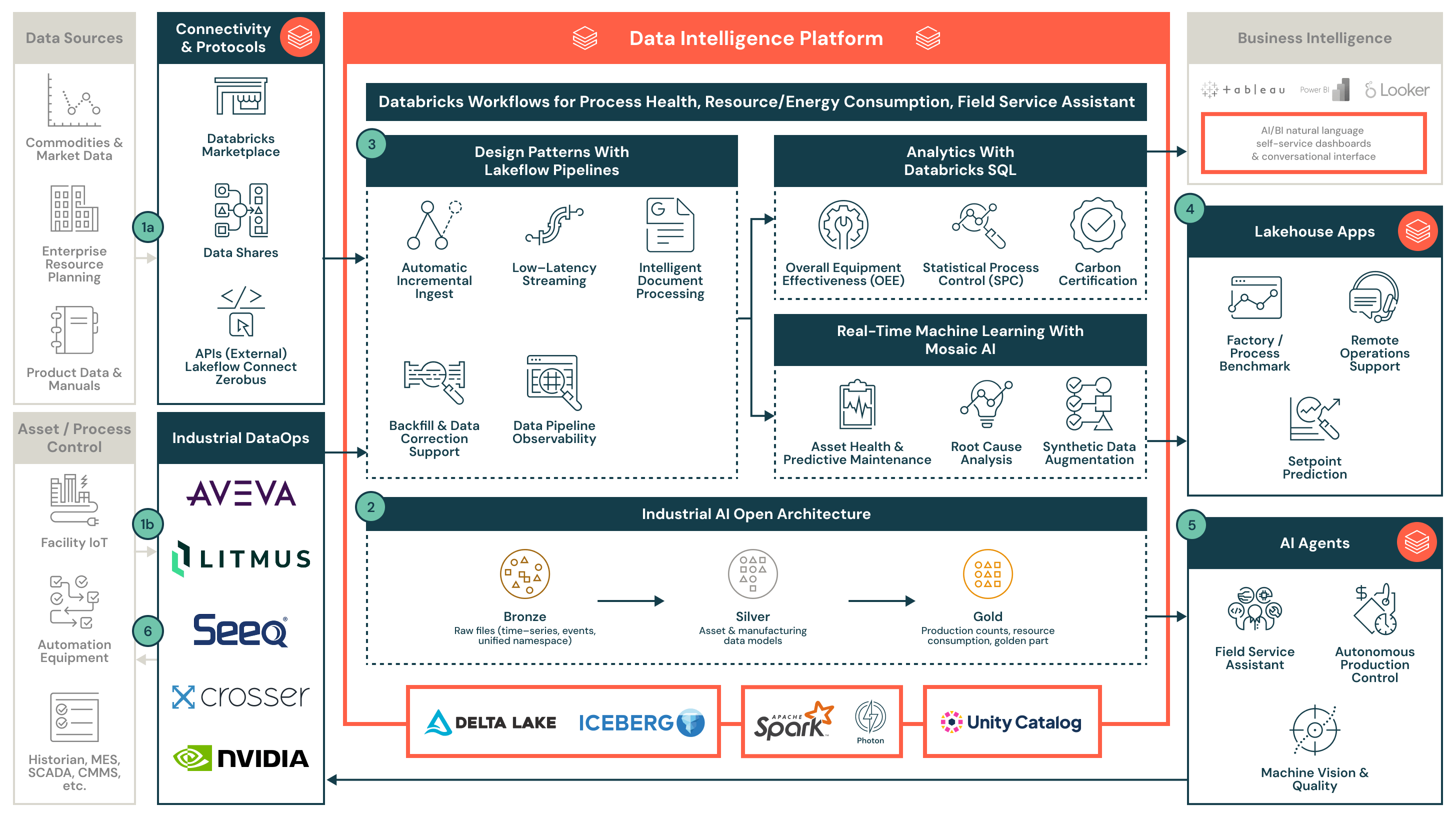Industrial AI Reference Architecture for Manufacturing
This architecture demonstrates industrial data integration from factory floor to cloud, showcasing best-practice design patterns for manufacturing analytics, AI-driven operations and edge computing across the Databricks Data Intelligence Platform.

Data integration and processing
Industrial systems (ERP, sensors, equipment) feed raw data through DataOps into cloud-based medallion architecture, where it’s cleaned and enriched through Bronze, Silver and Gold layers for different use cases.
- Analytics and intelligence: Processed data powers business intelligence dashboards for production metrics (OEE, compliance, real-time counts) and trains AI models for predictive maintenance, quality control and performance optimization
- AI agents and edge deployment: Advanced AI agents handle field service recommendations and autonomous production control, with models deployed to edge devices near equipment for real-time, low-latency decision-making and safety controls
Data flows
Following are descriptions of the data flows shown in the industrial AI architecture diagram.
- The ingestion patterns fall into two categories:
- ERP, market data and product manuals provide context about the configuration of the asset or product
- Industrial DataOps connects the data source in Level 3 and below within the Purdue Model to the cloud for visibility to Databricks
- Data is ingested via Lakeflow Connect into the medallion architecture Bronze layer alongside metadata (unified namespace), leveraging efficient incremental reads and writes to make data ingestion faster, scalable and more cost-efficient, while your data remains fresh for downstream consumption.
- Clean and enrich heterogeneous data scalably using Lakeflow Spark Declarative Pipelines for both batch and streaming data pipelines into Silver tables (manufacturing data models). Silver tables are often used as training inputs to AI models for predictive maintenance, quality inspection, etc., thereby improving asset performance and product quality across complex production processes.
- For business intelligence and reporting, data can be aggregated within Gold tables to support real-time analysis of overall equipment effectiveness (OEE), including compliance (carbon passport) and real-time production counts. Additionally, natural language interfaces like AI/BI democratize access to global factory network performance and advanced process control tools.
- The Mosaic AI Agent Framework can train, serve and audit agentic AI models, such as a field service agent that recommends repair actions and troubleshooting guidance or an autonomous production control that simulates production scenarios and overrides production schedules based on economic conditions, feedstocks or ambient conditions.
- AI agents and machine learning models are deployed to the edge to run locally near equipment for low-latency control and safety purposes.
Benefits
Benefits of using the Databricks Platform for industrial AI architecture include the following.
- Establish best-practices architecture for industrial AI use cases
- Learn about what integrations are possible and how they differentiate Databricks as the industry leader
